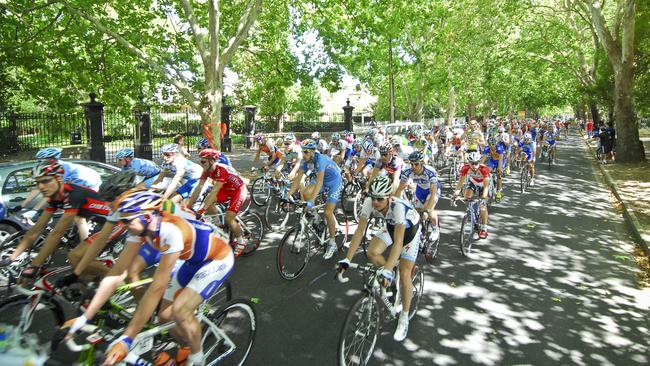Revised 30-year plan seeks more leafy streets but fewer people
ADELAIDE is to become one big leafy suburb under plans to increase the coverage of tree canopies by half over the next three decades.

SA News
Don't miss out on the headlines from SA News. Followed categories will be added to My News.
- My Big Idea — Share your thoughts on how to make Australia better
- Population growth targets likely to be lowered under State Government review of 30-Year Plan
ADELAIDE is to become one big leafy suburb under plans to increase the coverage of tree canopies by half over the next three decades.
A proposed update to the city’s 30-year plan sets a target of an average 30 per cent of canopy cover across the city, up from 20 per cent now, as the Planning Department adapts to the State Government’s goal of making Adelaide the world’s first carbon-neutral city.
The update sets a goal of 80 per cent of Adelaide residents living in “walkable suburbs” by 2045, meaning within walking distance of all major services, transport and open space.
It also revises population predictions down by 15,000 people, 10,000 dwellings, and 30,000 new jobs compared to the original 30-year plan, released by then-premier Mike Rann in 2010.
Original targets were a population growth of 560,000, with 258,000 new dwellings and 282,000 new jobs.
The proposed plan revision includes:
40 PER CENT of new housing to be built close to current and proposed fixed-line public transport corridors (trams and trains); down from about 60 per cent expected by the end of the original plan.
80 PER CENT of all new housing to be built in established areas by 2045; up from 70 per cent.
AN increase in work trips made by “active modes” (eg walking, cycling or public transport) by 50 per cent.
INCREASED diversity of housing to cater for a changing and ageing population.
AN increase in the urban tree canopy to an average of 30 per cent by 2045; up from 20 per cent now.
The tree-canopy plan supports Adelaide’s goal to become the world’s first carbon neutral city and mitigate the forecast impacts of climate change. In 2014, the CSIRO and Bureau of Meteorology estimated that Adelaide’s annual average number of days over 35C may increase from 17 to up to 47 by 2070.
A report by the Institute for Sustainable Futures analysed SA’s 19 local government areas using i-Tree software – which uses aerial photography to estimate benefits, including cooler urban areas.
It found that residents of Adelaide’s west and north – including Charles Sturt, Holdfast Bay, Port Adelaide, West Torrens, Gawler and Playford council areas – had less than 15 per cent canopy coverage in some areas.
The proposed plan update is expected to go to a six-to-eight week consultation period from next month.
The Planning Department expects to finalise the updated plan by September, with Cabinet sign-off and release around November.
Planning Minister John Rau would not comment on the proposals, but Opposition urban development spokeswoman Vickie Chapman said the Government had been forced to revise its population targets because it was unable to attract people to SA.
In a statement, a spokesman said the Planning Department was in discussions with stakeholders, including local councils, about what changes should be made to the plan.
“The 30-year plan is being revised and updated,” he said.
“While this process is under way, it is not appropriate to detail what may or may not be in the draft plan which is due to be published soon.”



